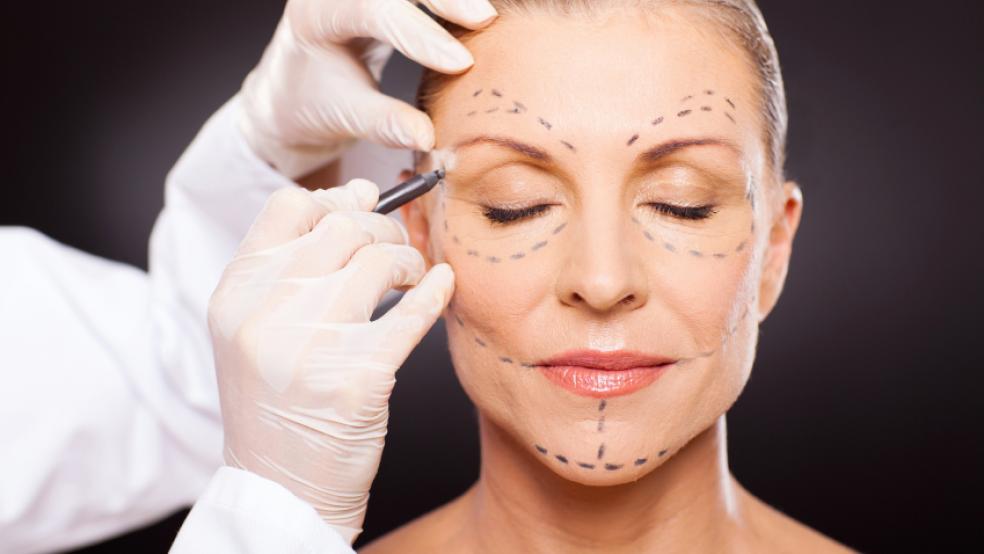After the recession hit, business at Dr. Mary Lee Peters’ plastic surgery practice grew steadily.
The downturn brought new types of patients to her Seattle office—people with severance packages who were still smarting from layoffs and too much time on their hands. Several put the money towards cosmetic surgeries, and Peters went to work helping them look “fresher” for their job interviews, she said.
That meant Botox and fillers for the more conservative patients, but “most of the time it would be somebody who would have their eyes done or their face done,” she said.
Related: Fed Study: One-Fourth of Americans “Just Getting By” Financially
“People would use their money from being laid off, their severance pay … to get cosmetic surgery so they could look better for their next job interview,” Peters recalled in an interview with The Fiscal Times last week. “You’d be amazed at how often I’d see that. You would think that people would be scampering away from something like this.”
With a growing number of baby boomers postponing retirement, venturing back into the job market, or striving to retain their standing at work, more and more seniors are turning to cosmetic enhancements to gain a competitive edge.
The number of cosmetic procedures including surgery and minimally invasive procedures topped 15.1 million in 2013; people aged 55 and over made up an increasing number of the patient share, according to a February study by the American Society of Plastic Surgeons.
While the majority of cosmetic procedures were performed on 40- to 54-year-old patients, the 55+ set underwent 3.8 million procedures, or 26 percent. That’s up four percent from 2012, according to the report.
Related: Selfies Fuel Cosmetic Surgery Boom, Doctors Say
“Many people in their 50s and 60s who are looking for work find their age can be a real barrier to landing a new job, even though age discrimination in employment is illegal,” John Rother, former executive vice president of Policy, Strategy and International Affairs at AARP said in an interview, “Employers have many subtle ways of favoring younger, more attractive applicants.”
The result, said Rother, is that “many older women in particular, especially those in competitive job markets, are taking steps to improve their appearance in order to better compete against younger job applicants.”
Related: Gen Y vs. Boomers: Workplace Conflict Heats Up
In fact, $12.6 billion was spent on cosmetic procedures in the U.S. in 2013, an increase of 15 percent from the previous year. That was the fourth straight year of growth for the industry, according to the American Society of Plastic Surgeons.
Experts say the growth has been in minimally invasive treatments. Skin treatments such as Botox injections and soft tissue fillers are cheaper than traditional surgical procedures like facelifts and eyelid surgery, and they require less recovery time.
These approaches are especially appealing to older people in the workforce who think they are being outmatched when compared to peers who may appear younger and more energetic, said David Sarwer, professor of Psychology in Psychiatry and Surgery at the University of Pennsylvania.
“The more common scenario is when we have people who are talking more about, ‘I’m concerned that I’m falling behind, or I’m concerned that I haven’t gotten the promotion that I have wanted to get several years ago, and that’s why I’m having it done,’” said Sarwer.
Related: Attention Boomers: The Economy Needs You to Work Past 70
Professionals or high ranking executives seek out Peters with similar concerns—they want to appear energetic and vital to their workplace in order to extend their careers for as long as possible. And some are in a difficult corner. A Federal Reserve survey released last week suggests that fallout from the recession will force many to work well past their planned retirement date—all the more incentive to keep a tight grip on a good job.
A new analysis of Census data found that the percentage of people 65 and older in the labor force increased from 12.1 percent in 1990 to 16.1 percent in 2010, according to Forbes. The Urban Institute forecasts that employees 50 years and older will account for 35 percent of the labor force by 2019.
“We live in a society with pretty serious ageism,” Peters said. “And it’s starting to make them angry that people are looking at them and saying, ‘Hey, when are you going to retire, why are you doing all this?’”
Whether plastic surgery and scores of other cosmetic treatments actually give a leg up to older Americans either entering or currently in the workforce is unclear.
“We really want patients to realize that … these procedures do not lead to Cinderella-like transformations in their lives,” Sarwer said. Researchers are still unsure how cosmetic procedures affect quality of life and self-esteem in patients.
“While some people may see you as more attractive, and they may have a positive impact on things like your body image and how you feel about your appearance, they in fact may not help you get a new job, or do things like save a failing marriage,” Sarwer said.
Dorothy Tannahill-Moran, a career coach who leads job searching classes for people 50 and older, advises her students to focus more on keeping their wardrobes current and matching the higher energy levels of younger would-be co-workers than zeroing in too much on plastic surgery.
“It’s a fairly easy leap to go from feeling like you’re at a disadvantage and having perhaps had a couple of blows dealt to you and then going, well, maybe if I clean up my act, if I go get plastic surgery, maybe that’s it,” she said in an interview. “I think there’s more going on than just how wrinkle-free your face might be.”
Top Reads from The Fiscal Times:

